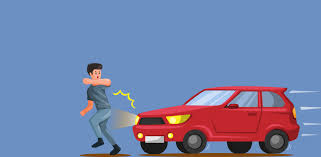Motor vehicle Laws Australia
Australia's motor vehicle laws are designed to ensure road safety and efficient traffic management across its diverse regions. Key aspects include:
Driving Regulations
Driving Side: Vehicles operate on the left-hand side of the road.
Minimum Driving Age: The minimum age to obtain a learner's permit is typically 16, varying by state. This permit allows drivers to practice under certain restrictions before obtaining a full license.
Licensing: Australia employs a graduated licensing system, generally comprising a learner's permit, provisional (P1 and P2) licenses, and a full license. Each stage has specific requirements and restrictions, such as passenger limits and night-time driving restrictions, to promote safe driving habits.
Speed Limits
Urban Areas: Major routes in built-up areas are typically limited to 80 km/h, with local streets generally limited to 50 km/h unless otherwise posted.
Rural Roads: The default speed limit is usually 100 km/h, with some roads allowing up to 110 km/h where signposted. In the Northern Territory, certain highways previously had no speed limit; however, now the maximum speed is 130 km/h where signposted, with a default of 110 km/h on other rural roads unless otherwise indicated.
Alcohol Consumption
- Blood Alcohol Concentration (BAC) Limits: The legal BAC limit for fully licensed drivers is generally 0.05%. For learner and provisional drivers, lower limits apply, often 0.00%. Penalties for exceeding BAC limits can include fines, license suspension, and mandatory education programs.
Seat Belts and Child Safety
Seat Belts: Wearing seat belts is mandatory for all occupants in a vehicle.
Child Restraints: Children under 7 years must be secured in appropriate child restraints, with specific requirements based on age and size. These restraints are typically placed in the rear seats.
Mobile Phones
- Usage While Driving: Using a mobile phone while driving is prohibited unless a hands-free system is employed. This includes holding the phone or using it for texting, calling, or accessing applications.
Traffic Enforcement
Speed Enforcement: Speed limits are enforced through various means, including mobile and fixed cameras, as well as radar guns operated by police and road authorities.
Demerit Points: Traffic offenses accrue demerit points, which can lead to license suspension if a certain threshold is exceeded within a specified period.
Recent Developments
There have been ongoing discussions and legislative actions concerning road safety, particularly focusing on issues like youth crime involving stolen vehicles. For instance, incidents in Queensland have highlighted the need for stronger legislative measures to address such offenses.
It's essential for drivers and residents to stay informed about the specific road rules and regulations applicable in their state or territory, as there can be variations. Regularly consulting official road authority websites and local law enforcement announcements is advisable to ensure compliance and promote road safety.




0 comments